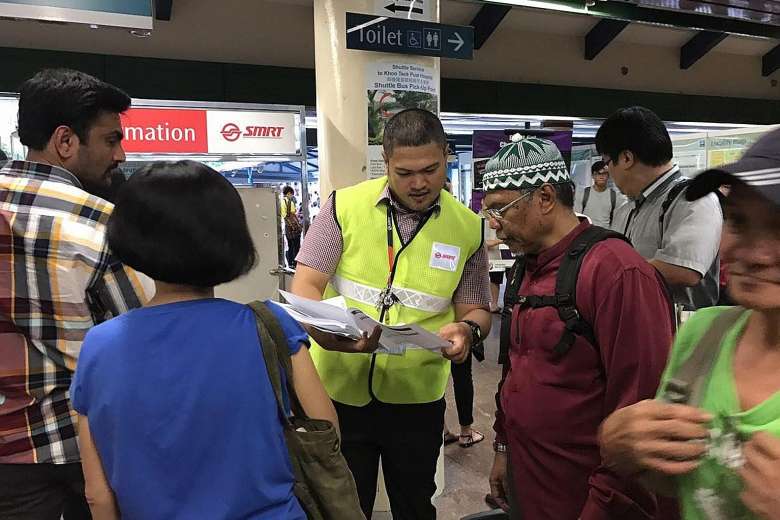Train delays: Commuters should not be left in the dark
Sign up now: Get ST's newsletters delivered to your inbox

Follow topic:
SINGAPORE - It is not unusual for rail lines to experience teething issues when new systems are implemented. Operators all over the world, from India to Britain to the United States, have experienced it when they changed or upgraded their signalling systems.
But the way things are going in Singapore, the teething problem looks like it could become an orthodontic flare-up.
Even if operator SMRT, as well as Transport Minister Khaw Boon Wan, had warned the public that the North-south Line could experience some glitches when testing of the new signalling system starts this week, few members of the public were prepared by the extent of the disruption.
On Thursday, the system started to act up in the early afternoon, when trains started to stop at stations for up to five minutes before moving off. During the evening peak around 6.30pm, the glitch worsened, and SMRT warned that journeys would take 20 minutes longer.
But people on the trains said the delays were twice as long. Commuter Eugene Mok, 32, said: "The trip from Yew Tee (6:20pm) to Bukit Batok (7:08pm) took 48 minutes. A typical eight-minute trip for three stations took an extra 40 minutes."
On Friday, the same northern stretch was hit by the signalling fault. This time, SMRT said journeys would take 30 minutes longer. But going by train speeds as of 6.12pm, which were down to 18kmh - or one-fifth of their normal speeds, delays could be significantly longer than half an hour.
Full-day weekday testing of the new signalling system - which allows trains to move closer to each other and hence increase service frequency - started on Monday (May 29). Problems started cropping up almost immediately.
Trainspotting group SGTrains commented on its Facebook post on Wednesday: "Today's North South Line signalling trial was no better than yesterday's. Train doors open but platform screen doors fail to open, and after the platform screen doors open the train doors abruptly close... These are just some of the many issues that plague the NSL today.
"We suggest that if you are in a hurry, please avoid the NSL and use alternative transport like buses to get to your destination. We hope that the LTA and SMRT will quickly address these issues."
The fan group speaks for the rest of us.
But as of now, both SMRT and the Land Transport Authority have not been able to shed light on why exactly the system is acting up thus. They also would not say how long the testing period will last.
Commuters should not be left in the dark on such a pertinent issue which they will face day in and out. It is well and good to ask people to make alternative travel plans, but until our rail network is as dense as New York's or Tokyo's, there is no real alternative.
The issues facing the North-south Line, if not fully understood and addressed, are likely to manifest again when the East-west Line goes live with the new signalling system eventually (the authorities have not announced the date), and when the Tuas West Extension starts operation on June 18. The four-stop extension which goes westwards from Joo Koon station runs on the new signalling system.
Clearly, better contingencies and better communication will go a long way in helping commuters bear with the gnawing toothache.

